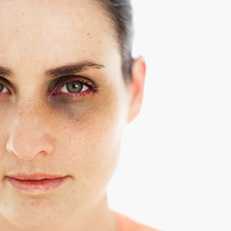The Science Base for Prevention of Injury and Violence
On This Page

Worldwide, 5.8 million people die each year from injuries. More than 180,000 fatal injuries occur in the U.S. alone. Motor vehicle crashes, falls, homicides, suicides, domestic violence, child maltreatment, and prescription drug overdoses are just some of the tragedies we hear about every day that affect us all, regardless of sex, race, or economic status. In fact, injury is the leading cause of death for people in the U.S. between the ages of 1 – 44. Beyond the toll these tragedies take on the lives and health of people, there is also a significant economic and societal burden – every year more than $400 billion is spent on medical expenses and lost productivity due to injuries. While many people accept these events as “part of life,” most events resulting in injury, death or disability are predictable and therefore preventable.
This session of Public Health Grand Rounds explores the role of public health in the prevention of injury and violence, and provides a comprehensive picture of the science of injury and violence that has been used to develop and implement solutions such as suicide prevention programs in Oregon and the adoption of the .08 blood alcohol limit for U.S. drivers. The session also looks at future public health challenges and opportunities in reducing the number of preventable tragedies caused by injury and violence.
Presented By
Linda C. Degutis, DrPH, MSN
Director, National Center for Injury Prevention and Control, CDC
Presentation – Injury and Violence Prevention: The Role of Public Health in Building the Science Base and Translating Science to Practice
Melvin Kohn, M.D., M.P.H
Director and State Health Officer, Oregon Public Health Division
Presentation – Using Surveillance to Drive Interventions: Suicide Prevention in Oregon
David A. Sleet, B.A., M.A., Ph.D.,
Associate Director for Science, Division of Unintentional Injury Prevention,
National Center for Injury Prevention and Control, CDC
Presentation – Using Evidence to Inform Policy: The Case of 0.08 BAC Laws in the United States
Georges C. Benjamin, MD, FACP, FNAPA, FACEP (E), Hon FRSPH
Executive Director, American Public Health Association
Presentation – The Next 20 Years: Challenges and Opportunities for Injury and Violence Prevention
Facilitated By
Tanja Popovic, M.D., Ph.D., Scientific Director, Public Health Grand Rounds
Shane Joiner, Communication Manager, Public Health Grand Rounds
- Page last reviewed: January 19, 2012
- Page last updated: January 19, 2012
- Content source:
- Centers for Disease Control and Prevention
- Page maintained by: Office of Associate Director of Communication, Division of Public Affairs



 ShareCompartir
ShareCompartir